Bald Eagle
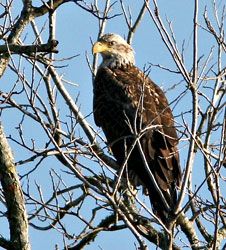
Photo courtesy of John Baines
Haliaeetus leucocephalus
Family: (Accipitridae) Hawks and Allies
Preferred Habitat: Areas with tall trees, usually close to water.
Seasonal Occurrence: Common in winter; uncommon in summer.
Notes: Our national emblem since 1782, the Bald Eagle is a symbol of freedom, longevity, and strength. An adult Bald Eagle stands 3 feet tall, weighs as much as 14 pounds and flies on a wingspan 6 to 8 feet. Adult Bald Eagles have white heads and tails with dark brown bodies and wings. Their legs and bills are bright yellow. Immature birds have mostly dark heads and tails; their brown wings and bodies are mottled with white in varying amounts. Young birds attain adult plumage in about five years.
Bald Eagles are present year-round throughout Texas as spring and fall migrants, breeders, or winter residents. The Bald Eagle population in Texas is divided into two populations; breeding birds and nonbreeding or wintering birds. Breeding populations occur primarily in the eastern half of the state and along coastal counties from Rockport to Houston. Nonbreeding or wintering populations are located primarily in the Panhandle, Central, and East Texas, and in other areas of suitable habitat throughout the state.
Bald Eagles build some of the largest of all bird nests—typically 5 to 6 feet in diameter and 2 to 4 feet tall. Since Bald Eagles eat primarily fish, their nests are near lakes, reservoirs, rivers and creeks. Eagles also will feed on carrion, ducks, geese and small mammals.
The Bald Eagle’s recovery from near extinction is a spectacular conservation success story. The DDT ban, legal protections and habitat restoration have all contributed to a dramatic resurgence. From a dismal mid-1960s population of about 450 breeding pairs in the lower 48 states — including only five in Texas — the birds have recovered to about 10,000 breeding pairs in the lower 48 states, with roughly 156 pairs in Texas. The Bald Eagle was removed from the endangered species list in 2007.
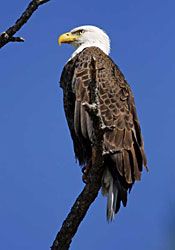
Photo courtesy of David McDonald
Profile by Jon Piasecki: Often recognized as a national symbol of the United States, the Bald Eagle has been the country’s national bird since 1782. Known for their bright white heads and tails and yellow bills, Bald Eagles can be found throughout most of North America. Some areas of the United States host Bald Eagles year-round, typically in coastal areas or near waterways. Other populations of Bald Eagles breed in Alaska and Canada and extend their wintering range south to encompass all lower 48 states.
The Bald Eagle saw a sharp decline in population size during the mid-20th century because of pesticide use (specifically DDT), trapping, and poisoning. The species was listed under the Endangered Species Act in 1978 and saw an amazing resurgence following protective measures. The Bald Eagle has since been removed from the endangered species list due to its population growth; however, it remains an important bird that continues to need monitoring and protection.
Bald Eagles prey on a variety of animals including fish, mammals, reptiles, amphibians, and even birds. They may either catch and eat their prey live or sometimes act as a scavenger and prey on animal carcasses. Typically, Bald Eagles mate for life, returning to the same nest every year to raise a new brood of chicks. Their nests are very large, usually 5-6 feet wide. Once a clutch of 1-3 eggs is laid, both parents will take turns incubating the nest. Typically, the eggs hatch after just over a month, and the chicks will remain in and around the nest for up to an additional 3 months. Bald Eagles can live on average between 20-30 years, with the oldest known individual having been at least 38 years old.
Bald Eagles can be seen all throughout Texas this time of year, usually near bodies of water or soaring in the sky. This fall and winter of 2022, there have been sightings of Bald Eagles in Smith Oaks Sanctuary in High Island as well as along the Bolivar Peninsula. Next time you see a bird soaring overhead, be sure to look for a white head or tail!
-
Cornell Lab of Ornithology
-
Field Guide
-
Bird Library
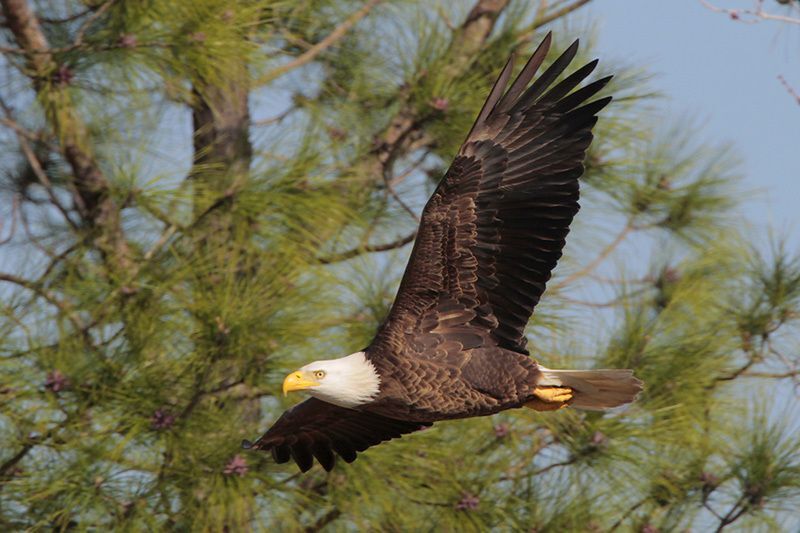
© Greg Lavaty, www.texastargetbirds.com
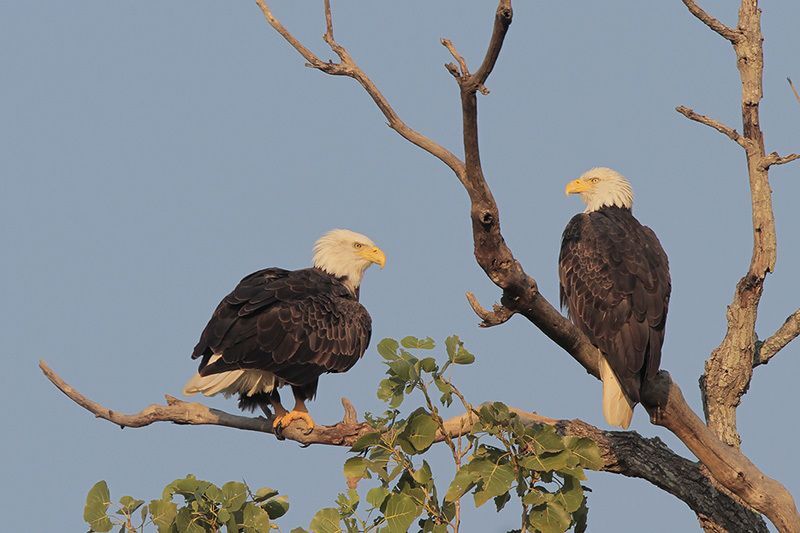
© Greg Lavaty, www.texastargetbirds.com

© Greg Lavaty, www.texastargetbirds.com
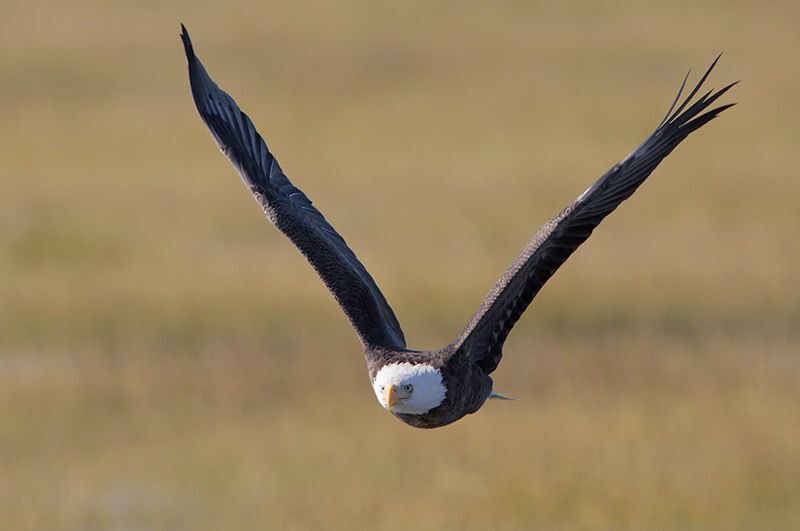
© Greg Lavaty, www.texastargetbirds.com




















